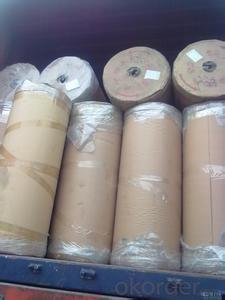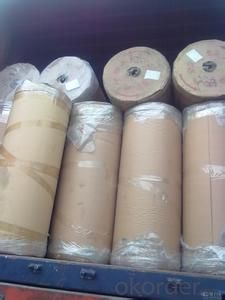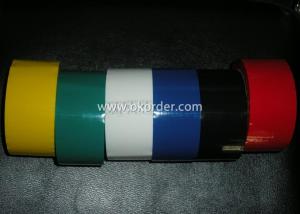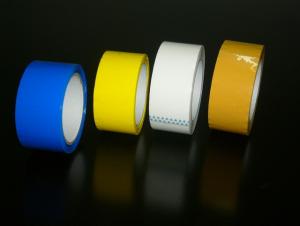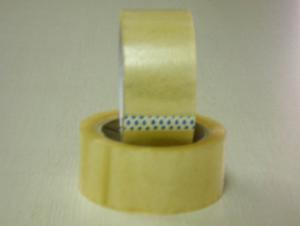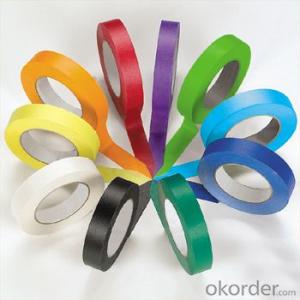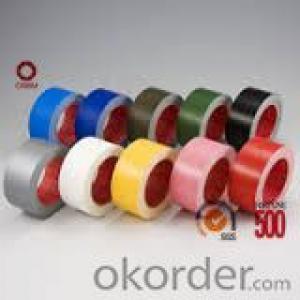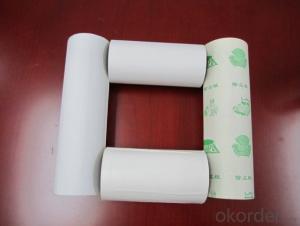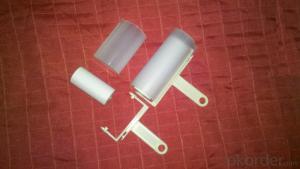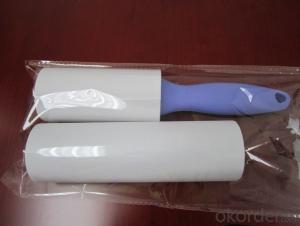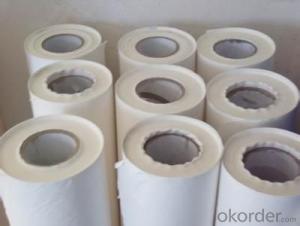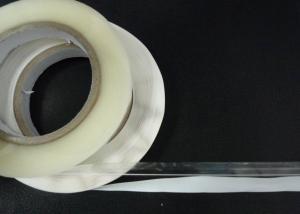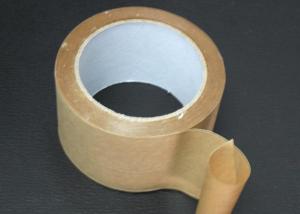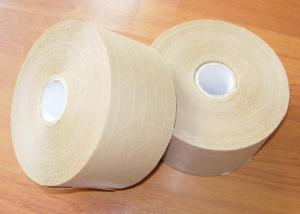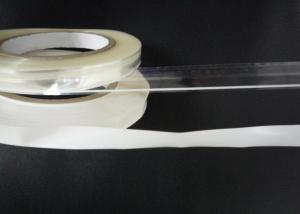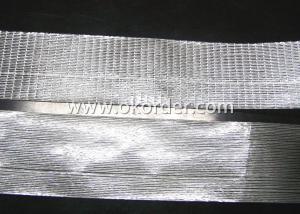2024 Hot Sale Duck Tape and Packaging Tape Sticky Industrial Lint Roller Cleaning Lint Roller
- Loading Port:
- China main port
- Payment Terms:
- TT OR LC
- Min Order Qty:
- 10000 roll
- Supply Capability:
- 10000000 roll/month
OKorder Service Pledge
OKorder Financial Service
You Might Also Like
Specification
1.Used for wiping off hair,dust and scurf
2.Very small exquisite and easy to carry
3.Non-poisonous and odorless
4.Refillable
Features
Sticky Cleaning Lint Roller (refill ,remover)
Used for wiping off hair, dust and scurf on clothes, cars, sofas, blankets, curtains and beds.
Small, exquisite and convenient to carry
Electric supply or water not required
No noise and no electromagnetism disturbed.
Strong sticky and nice glue
Cleaning tapes can be used for families, hospitals, offices and other
special places (such as railways, engine rooms, computer rooms, labs)
Stick-lay of this products is dealt with special request, which is a green product
Product Description
Material: paper base
Coated special treated adhesive layer
With 10- 60 layers or 1-9M
Layer: spiral sheet or straight cutting sheet
Cardboard tube length: 10cm
The tube inner diameter: 3.75 to 3.85cm
Plastic handle: 20 to 22.5cm
Handle: as follows,any color is acceptable
Usage
Suitable for home, hospitals, offices.It is the best solution for removing unwanted hair or dust on clothes, pets, furniture,
carpets, curtains and car interiors. No need electric supply or water. Just tear off each section when used and ready to go again.
- Q: Does packaging tape come with a dispenser?
- Yes, packaging tape often comes with a dispenser. The purpose of the dispenser is to make it easier and more efficient to apply the tape to packages. The dispenser typically has a handle that allows you to hold and control the tape while sealing boxes or packages. This eliminates the need to cut the tape manually and prevents tangling or wasted tape. However, it's important to note that not all packaging tapes come with a dispenser. Some tapes may need to be purchased separately, while others may be sold as a set with the dispenser included. It is always a good idea to check the product description or packaging to confirm if a dispenser is included with the packaging tape.
- Q: Is packaging tape safe for use on delicate surfaces or materials?
- Packaging tape is generally not recommended for use on delicate surfaces or materials. It is designed to provide a strong and secure bond on sturdy surfaces such as cardboard boxes. Using packaging tape on delicate materials may cause damage, leave residue, or negatively affect the appearance of the surface. It is advisable to use specialized tapes or alternative methods to protect delicate surfaces during packaging.
- Q: Is packaging tape safe for use on photos or artwork?
- Although packaging tape can be used on photos or artwork, it is not the optimal choice. Its primary purpose is to secure boxes and packages, and it may not offer long-term protection or be archival quality. Using packaging tape on photos or artwork has the potential to harm the surface or leave residue upon removal. Additionally, it may gradually yellow or discolor over time, thereby affecting the visual appeal of the artwork or photo. To preserve the longevity and integrity of your photos or artwork, it is recommended to employ acid-free archival tape specifically designed for this purpose. Archival tape is crafted with materials that are safe for delicate surfaces and can be effortlessly removed without causing any damage. In conclusion, while packaging tape can serve as a temporary solution, it is advisable to utilize archival tape to ensure the utmost protection for your valuable photos or artwork.
- Q: Can packaging tape be used for sealing chemical or hazardous material containers?
- Packaging tape is not recommended for sealing chemical or hazardous material containers. This is because packaging tape typically does not have the necessary properties to effectively contain and prevent leakage of these substances. Chemical or hazardous materials often require specialized containers and sealing methods to ensure safety and compliance with regulations. These containers are designed to withstand the corrosive or reactive nature of the substances they hold, and their seals are engineered to provide a secure and leak-proof closure. Using packaging tape to seal chemical or hazardous material containers can pose risks such as leakage, contamination, and exposure to harmful substances. It may not provide a reliable barrier against leaks or spills, which could result in accidents, injuries, or environmental damage. To properly seal chemical or hazardous material containers, it is recommended to use specific sealing materials that are designed for these purposes. This may include specialized caps, gaskets, or seals that are compatible with the particular substance being contained. Additionally, it is crucial to follow the guidelines and regulations provided by relevant authorities for the safe handling, storage, and transportation of these materials.
- Q: How do I prevent packaging tape from getting tangled?
- Here are several suggestions to prevent packaging tape from becoming tangled: 1. Invest in a tape dispenser designed specifically for packaging tape. This dispenser incorporates a built-in cutting blade and roller mechanism that will help maintain control over the tape and prevent tangling. 2. Before applying the tape, ensure that the surface is clean and free of dust, debris, or any other potential obstructions that could cause the tape to stick and tangle. 3. Minimize handling of the tape as much as possible, as each time it is touched, there is a greater likelihood of it twisting or tangling. Handle the tape only when necessary. 4. Use a sharp cutter or a dispenser with a cutting blade to make clean and straight cuts. Uneven or jagged cuts can cause the tape to twist or tangle as it is unrolled or applied. 5. Store the tape properly when it is not in use. Keep it in a cool and dry place, away from direct sunlight or extreme temperatures. Additionally, keeping the tape in its original packaging or a designated container can help prevent tangling. 6. When unrolling the tape, hold the roll firmly and apply a slight tension to keep it straight. Avoid jerky movements or pulling the tape too forcefully, as this can cause it to twist or tangle. By following these suggestions, you can reduce the likelihood of packaging tape becoming tangled, resulting in a smoother and more efficient packaging process.
- Q: I want to be involved in the tape industry, is the parent type their split, but do not know the parent roll cut in segmentation machine is good, or even after the parent roll processing, and also is the problem of the equipment, how much money, thank you
- Also known as sealing tape, packing tape, which is based on BOPP biaxially oriented polypropylene film as substrate, after heating evenly pressure-sensitive emulsion, the formation of 8 mu m----28 Mu ranging from m layer, light industry enterprises, companies and individuals are indispensable in life activities,
- Q: Does packaging tape come in different colors?
- Yes, packaging tape does come in different colors. While the most common color for packaging tape is clear, there are also a variety of colors available to meet different needs and preferences. Some examples of colored packaging tape include red, blue, green, yellow, and black. These colored tapes can be used for various purposes such as color-coding different packages, indicating priority shipments, or simply adding a pop of color to your packaging. Additionally, colored packaging tape can also be used for decorative or artistic purposes, making it a versatile option for both practical and creative applications.
- Q: Does packaging tape have an expiration date?
- No, packaging tape does not have an expiration date.
- Q: Can packaging tape be used for sealing construction materials or tools?
- Yes, packaging tape can be used for sealing construction materials or tools, but it may not provide as strong or durable of a seal as other specialized tapes designed specifically for construction purposes.
- Q: Does packaging tape have a specific weight capacity?
- Yes, packaging tape does have a specific weight capacity. The weight capacity of packaging tape depends on its thickness, width, and quality. Generally, packaging tapes are designed to securely seal boxes and packages, and their weight capacity is determined by their adhesive strength and durability. Most standard packaging tapes have a weight capacity of around 20 to 30 pounds. However, heavy-duty packaging tapes are available that can handle weights of up to 50 pounds or more. It is important to consider the weight of the package or box being sealed and choose a packaging tape that can handle the specific weight capacity to ensure a secure and reliable seal.
Send your message to us
2024 Hot Sale Duck Tape and Packaging Tape Sticky Industrial Lint Roller Cleaning Lint Roller
- Loading Port:
- China main port
- Payment Terms:
- TT OR LC
- Min Order Qty:
- 10000 roll
- Supply Capability:
- 10000000 roll/month
OKorder Service Pledge
OKorder Financial Service
Similar products
Hot products
Hot Searches
Related keywords
